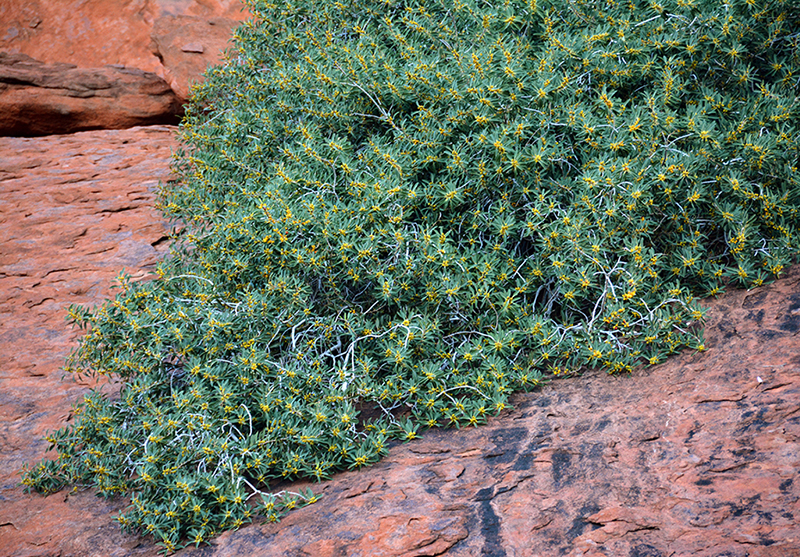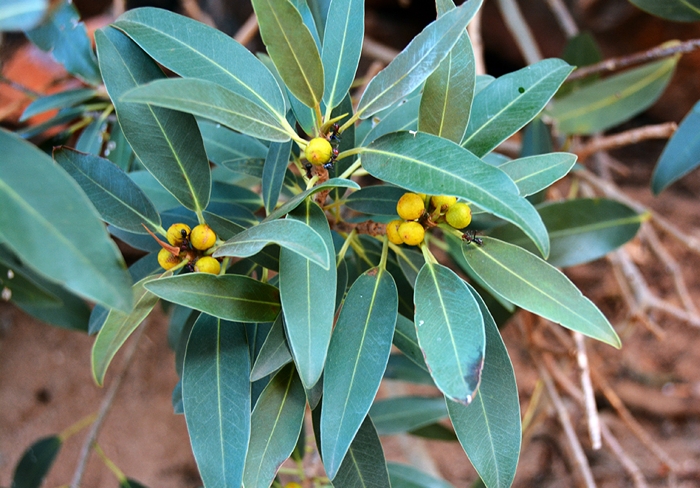Scientists have made what is being described as a once-in-a-lifetime discovery, finding a new plant species on the giant rock of Uluru in Australia. What's more, the fig has been hiding in plain sight for years.
Ficus desertorum, or the desert fig, is the name that's been given to the new plant. Before now, it was believed to belong in a sub-category of Ficus brachypoda, a species of fig tree found extensively in the northern and central parts of Australia.
A closer look has revealed that this is in fact its own distinct species, with its own distinct regional habitat. The leaves are the giveaway: they're smoother, narrower, and thicker than those on related types of figs.
 Ficus desertorum or the desert fig. (Australian Institute of Botanical Science)
Ficus desertorum or the desert fig. (Australian Institute of Botanical Science)
"Careful study of collections held in herbaria across Australia, and with reference to historical specimens held in European herbaria, showed that the central Australian populations were indeed morphologically distinct from more northern or western populations," says systematic botanist Russell Barrett from the National Herbarium of New South Wales in Australia.
"These figs are an incredibly significant species to First Nations peoples in central Australia, for food, shelter, and spirituality. Damaging these trees could be punishable by death historically, such is their significance to the whole community."
Discussions with the Australian Central Land Council took place to see if a name used by the various First Nations people might be more appropriate for the new species. However, given the rich variety of words for the tree throughout the local languages, a more standard scientific name was chosen instead.
What's more, 'Ficus desertorum' emphasizes just how unusual it is to find a fig like this in a desert environment.
The newly identified species of fig tree can also be found on other elevated landscapes in central Australia, including Kata Tjuta (the Olgas) and Karlu Karlu (Devils Marbles). It can be found on many rocky outcrops and around waterholes, with its leaves providing shelter for small animals such as birds and snails.
 Ficus desertorum or the desert fig. (Australian Institute of Botanical Science)
Ficus desertorum or the desert fig. (Australian Institute of Botanical Science)
"To recognize a new species for science is always exciting but to find one on Uluru is not something you expect in a lifetime of research," says Barrett. "Figs are famous for their long roots which seek out water, and this species has perfected that art.
"Roots have been reported following cracks in cliff walls for over 40 meters to reach precious water which might be hiding deep within the rock, or far below in a secluded pool. This is how the desert fig persists in the arid conditions found in the heart of Australia."
Some 750 fig species can be found worldwide, with around two-thirds of them found in Asia and Australasia – though Australia itself only contributes 43 native species to the total according to the latest records.
These figs have long been important for Australia's First Nations people, providing food in particularly arid environments. However, cataloging all the occurrences of these plants is difficult, across all of the wide, remote, rocky areas of the country.
As ever when it comes to discovering new species, one of the benefits should be in terms of its conservation: when a species has been identified scientifically, it can be tracked and monitored much more easily.
"We hope the description of this species with a new scientific name will enhance its protection in such an arid environment," says Barrett.
"While the species is quite widespread, and not currently threatened, it is only found in small populations, so shifts in climate, or localized impacts such as hot fires, could impact the species in the near future."
The research has been published in Telopea.
